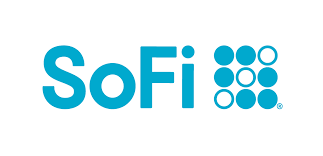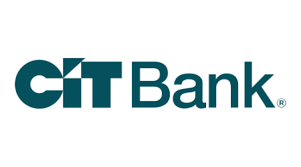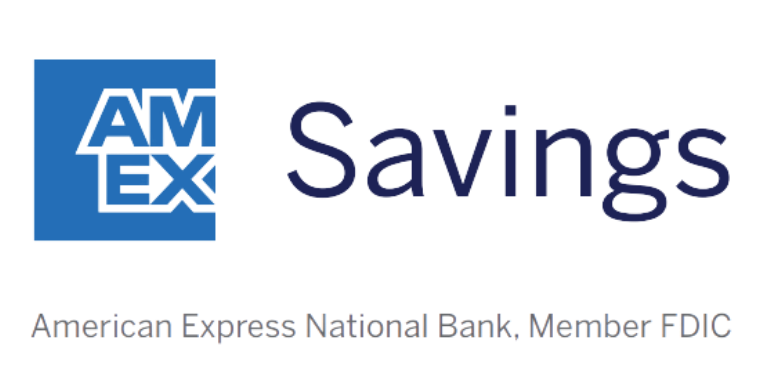More than 9 out of 10 American adults have either a checking or a savings account. The benefits are obvious: easy money transfer and storage. Checking and savings accounts are the peanut butter and jelly of personal finance: useful separately, but best when paired.
But when should you open a checking account vs. a savings account? We'll break it down.
What is a savings account?
Savings accounts help you store money you may need in the next one to five years or so. People open them because they earn you higher APYs on deposits than checking accounts. But savings accounts may limit withdrawals.
Pros of savings accounts
Higher interest rates: Savings accounts typically offer much higher interest rates than checking accounts. Online banks tend to offer the highest rates. The best high-yield savings accounts offer rates around 10 times higher than the national average.
Low minimums: Savings accounts typically require low minimum deposits, if any. Think $100 or less to open an account. (It's still "your money," but you must keep it in the account.)
FDIC insurance: Like checking accounts, savings accounts are also usually FDIC insured up to $250,000 per person per bank.
Cons of savings accounts
Withdrawal and transfer limits: Savings accounts limit you to six convenient withdrawals per month, according to Regulation D.
Feature limits: Savings accounts offer fewer features than checking accounts. It's tougher to find savings accounts that offer debit cards and check-writing capabilities.
Compare savings rates
Make sure you're getting the best account for you by comparing savings rates and promotions. Here are some of our favorite high-yield savings accounts to consider.
| Account | APY | Promotion | Next Steps |
|---|---|---|---|

Open Account for SoFi Checking and Savings
On SoFi's Secure Website.
Rating image, 4.50 out of 5 stars.
4.50/5
Our ratings are based on a 5 star scale.
5 stars equals Best.
4 stars equals Excellent.
3 stars equals Good.
2 stars equals Fair.
1 star equals Poor.
We want your money to work harder for you. Which is why our ratings are biased toward offers that deliver versatility while cutting out-of-pocket costs.
|
up to 3.80%²
Rate info
You can earn the maximum APY by having Direct Deposit (no minimum amount required) or by making $5,000 or more in Qualifying Deposits every 30 days. See SoFi Checking and Savings rate sheet at: https://www.sofi.com/legal/banking-rate-sheet.
Min. to earn: $0
|
New customers can earn up to a $300 bonus with qualifying direct deposits!¹
|
Open Account for SoFi Checking and Savings
On SoFi's Secure Website. |

Open Account for CIT Platinum Savings
On CIT's Secure Website.
Rating image, 4.50 out of 5 stars.
4.50/5
Our ratings are based on a 5 star scale.
5 stars equals Best.
4 stars equals Excellent.
3 stars equals Good.
2 stars equals Fair.
1 star equals Poor.
We want your money to work harder for you. Which is why our ratings are biased toward offers that deliver versatility while cutting out-of-pocket costs.
|
4.10% APY for balances of $5,000 or more
Rate info
4.10% APY for balances of $5,000 or more; otherwise, 0.25% APY
Min. to earn: $100 to open account, $5,000+ for max APY
|
Earn a bonus of at least $225 after a one-time deposit of $25,000+.
Transfer a one-time deposit of $25,000-$49,999.99 for a bonus of $225. Transfer a one-time deposit of $50,000+ for a bonus of $300. Account must be opened with code PS2025 while this promotion lasts, and funded within 30 days. Bonus will be fulfilled within 60 days from the funding date. There is no period of time where the customer will be required to maintain the funds. Account must be open when bonus is credited. One bonus per account and primary customer. Bonus will be credited into the Platinum Savings Account that fulfills the funding requirement. Funding can be deposited all at once or incrementally.
|
Open Account for CIT Platinum Savings
On CIT's Secure Website. |

Open Account for American Express® High Yield Savings
On American Express's Secure Website.
Rating image, 4.00 out of 5 stars.
4.00/5
Our ratings are based on a 5 star scale.
5 stars equals Best.
4 stars equals Excellent.
3 stars equals Good.
2 stars equals Fair.
1 star equals Poor.
We want your money to work harder for you. Which is why our ratings are biased toward offers that deliver versatility while cutting out-of-pocket costs.
|
3.70%
Rate info
3.70% annual percentage yield as of April 12, 2025. Terms apply.
Min. to earn: $0
|
N/A
|
Open Account for American Express® High Yield Savings
On American Express's Secure Website. |
SoFi disclosure:
¹ New and existing Checking and Savings members who have not previously enrolled in Direct Deposit with SoFi are eligible to earn a cash bonus of either $50 (with at least $1,000 total Direct Deposits received during the Direct Deposit Bonus Period) OR $300 (with at least $5,000 total Direct Deposits received during the Direct Deposit Bonus Period). Cash bonus will be based on the total amount of Direct Deposit. Direct Deposit Promotion begins on 12/7/2023 and will be available through 1/31/26. See full bonus and annual percentage yield (APY) terms at sofi.com/banking#1.
² SoFi members who enroll in SoFi Plus with Direct Deposit or by paying the SoFi Plus Subscription Fee every 30 days or with $5,000 or more in Qualifying Deposits during the 30-Day Evaluation Period can earn 3.80% annual percentage yield (APY) on savings balances (including Vaults) and 0.50% APY on checking balances. There is no minimum Direct Deposit amount required to qualify for the stated interest rate. Members without either SoFi Plus or Qualifying Deposits, during the 30-Day Evaluation Period will earn 1.00% APY on savings balances (including Vaults) and 0.50% APY on checking balances. Only SoFi Plus members are eligible for other SoFi Plus benefits. Interest rates are variable and subject to change at any time. These rates are current as of 1/24/25. There is no minimum balance requirement. Additional information can be found at http://www.sofi.com/legal/banking-rate-sheet. See the SoFi Plus Terms and Conditions at https://www.sofi.com/terms-of-use/#plus.
³ We do not charge any account, service or maintenance fees for SoFi Checking and Savings. We do charge a transaction fee to process each outgoing wire transfer. SoFi does not charge a fee for incoming wire transfers, however the sending bank may charge a fee. Our fee policy is subject to change at any time. See the SoFi Checking & Savings Fee Sheet for details at sofi.com/legal/banking-fees/.
⁴ SoFi Bank is a member FDIC and does not provide more than $250,000 of FDIC insurance per depositor per legal category of account ownership, as described in the FDIC’s regulations.
Any additional FDIC insurance is provided by the SoFi Insured Deposit Program. Deposits may be insured up to $3M through participation in the program. See full terms at SoFi.com/banking/fdic/sidpterms. See list of participating banks at SoFi.com/banking/fdic/participatingbanks.
⁵ We’ve partnered with Allpoint to provide you with ATM access at any of the 55,000+ ATMs within the Allpoint network. You will not be charged a fee when using an in-network ATM, however, third-party fees incurred when using out-of-network ATMs are not subject to reimbursement. SoFi’s ATM policies are subject to change at our discretion at any time.
⁶ Early access to direct deposit funds is based on the timing in which we receive notice of impending payment from the Federal Reserve, which is typically up to two days before the scheduled payment date, but may vary.
⁷ Overdraft Coverage is limited to $50 on debit card purchases only and is an account benefit available to customers with direct deposits of $1,000 or more during the current 30-day Evaluation Period as determined by SoFi Bank, N.A. The 30-Day Evaluation Period refers to the “Start Date” and “End Date” set forth on the APY Details page of your account, which comprises a period of 30 calendar days (the“30-Day Evaluation Period”). You can access the APY Details page at any time by logging into your SoFi account on the SoFi mobile app or SoFi website and selecting either (i) Banking > Savings > Current APY or (ii) Banking > Checking > Current APY. Members with a prior history of non-repayment of negative balances are ineligible for Overdraft Coverage.
What is a checking account?
Checking accounts help you spend and store money you might need tomorrow. They usually give you multiple deposit and withdrawal options so you can add and withdraw funds easily. Money kept in your checking account earns you little interest, if any.
Pros of checking accounts
Convenience: Banks and credit unions give you several ways to move your money in and out of your checking account, including:
Few limitations: Checking accounts generally let you withdraw funds as often as you want. Savings accounts are typically more limited (see below).
FDIC insurance: All the checking accounts at top banks are insured by the Federal Deposit Insurance Corporation (FDIC) up to $250,000 per person per bank. That means if your bank goes under, the FDIC will reimburse your lost funds up to a maximum of $250,000.
Cons of checking accounts
Little to no interest: Checking accounts typically don't pay you money for hoarding cash in them. If they do pay you, it's probably not much compared to top-tier savings accounts.
Fees: Checking accounts typically charge more fees than savings accounts. (They're more feature-rich.) Here are a few common checking account fees:
- Monthly maintenance fee: A monthly fee you must pay to keep an account open. Many online banks don't charge these. Banks that do charge maintenance fees typically waive them if you meet certain criteria, like by setting up direct deposits to your account.
- ATM fees: You must pay ATM fees to use out-of-network ATMs. These are typically $2 to $3 per withdrawal. ATM owners may charge you additional out-of-network fees.
- Minimum balance charge: Some checking accounts charge you $10 to $12 if your balance drops below a certain amount.
- Foreign transaction fee: If you use your debit card outside the United States, you could incur a foreign transaction fee. This often adds 3% to your purchase. Some banks charge you foreign transaction fees for banking with non-U.S. merchants, no matter where you are when you make the purchase.
- Overdraft fee: Your bank may charge you $35 or so for attempting to withdraw more money than you have stashed in your checking account. Overdraft fees are typically charged by traditional brick-and-mortar banks.
Compare checking accounts
We recommend comparing checking accounts to make sure you're getting the best fit for you. Here's a list of our favorite accounts.
| Account | APY | Promotion | Next Steps |
|---|---|---|---|

Open Account for Discover® Cashback Debit
On Discover Bank's Secure Website.
Rating image, 5.00 out of 5 stars.
5.00/5
Our ratings are based on a 5 star scale.
5 stars equals Best.
4 stars equals Excellent.
3 stars equals Good.
2 stars equals Fair.
1 star equals Poor.
We want your money to work harder for you. Which is why our ratings are biased toward offers that deliver versatility while cutting out-of-pocket costs.
|
0%
Min. to earn: N/A
|
Earn 1% cash back on up to $3,000 in debit card purchases each month (see details when you click 'Open Account')
|
Open Account for Discover® Cashback Debit
On Discover Bank's Secure Website. |
|
Open Account for Quontic High Interest Checking
On Quontic's Secure Website.
Rating image, 4.50 out of 5 stars.
4.50/5
Our ratings are based on a 5 star scale.
5 stars equals Best.
4 stars equals Excellent.
3 stars equals Good.
2 stars equals Fair.
1 star equals Poor.
We want your money to work harder for you. Which is why our ratings are biased toward offers that deliver versatility while cutting out-of-pocket costs.
|
up to 1.10%
Min. to earn: $1
|
High APY when you complete 10 or more qualifying debit card purchases each month
|
Open Account for Quontic High Interest Checking
On Quontic's Secure Website. |
10 debit card point of sale transactions of $10 or more per statement cycle required to earn the maximum APY. If the qualifying activity requirement is not fulfilled, the interest rate paid on the entire balance will be 0.01% APY.
Saving vs. checking account: which should you pick?
Most Americans should consider opening one of each. The cheapest are essentially free and they cover different bases. Checking accounts help you cover everyday expenses, and savings accounts help you build medium- or long-term wealth.
Some online banks even offer a combined checking and savings account. Basically, it's a one-for-two combo. It's typically free, basic, and simple to manage from your smartphone. I like this because you can manage your money in one place, from a single screen.
Determined to stick with one account only? Okay. Chances are, you want to open a checking account. Checking accounts are the more flexible of the two, and they're great for managing money you may need tomorrow. Some even offer you interest on deposits.
But if you're okay with potentially facing limits on withdrawals, you should consider opening up a savings account instead. Savings accounts offer the best rates. They're great for building emergency funds and meeting medium-term goals.
Many people are missing out on guaranteed returns as their money languishes in a big bank savings account earning next to no interest. Motley Fool Money's top savings account picks can earn you more than 10x the national average savings account rate.
FAQs
-
Savings accounts tend to charge lower fees overall. But you can open both accounts cheaply.
-
They're both FDIC insured and protected by standard bank encryption. So you're probably safe from hackers and bank failure. But checking accounts have one weakness: debit cards. If your debit card is stolen, the thief could drain your account. Federal law protects you somewhat, but you must report stolen debit cards quickly to avoid charges.
-
Checking accounts are better than savings accounts when you need to make everyday purchases from the account. Checking accounts let you withdraw money as often as you want. Some savings accounts limit your spending.
-
A savings account is better than a checking account when you want to save up for medium-term goals or build emergency savings. Savings accounts pay more interest than checking accounts, generally speaking.
We're firm believers in the Golden Rule, which is why editorial opinions are ours alone and have not been previously reviewed, approved, or endorsed by included advertisers. Motley Fool Money does not cover all offers on the market. Motley Fool Money is 100% owned and operated by The Motley Fool. Our knowledgeable team of personal finance editors and analysts are employed by The Motley Fool and held to the same set of publishing standards and editorial integrity while maintaining professional separation from the analysts and editors on other Motley Fool brands. Terms may apply to offers listed on this page. APYs are subject to change at any time without notice.